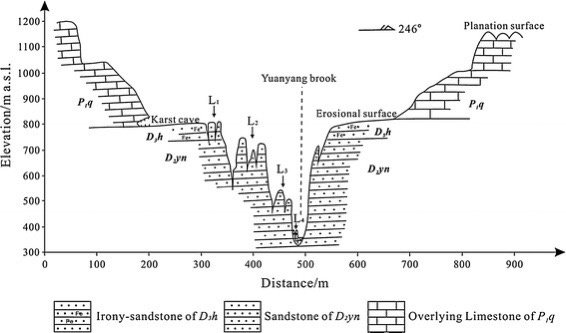
How Were the Pillars in Zhangjiajie Formed?
The stone pillars in Zhangjiajie National Forest Park, China, are a breathtaking sight. Towering hundreds of meters into the air, these sandstone formations are a testament to the power of nature. But how did these incredible structures form?
The Pillars of Zhangjiajie: A Product of Sea Erosion
The answer lies in a combination of geological processes that have taken place over millions of years. Here's a breakdown:
1. Ancient Seas and Sedimentation
- Approximately 380 million years ago, during the Devonian period, the area now known as Zhangjiajie was submerged under a vast, shallow sea.
- Rivers carried massive amounts of sand and quartz sediment into this sea.
- Over time, these sediments were compressed by the weight of the water and overlying layers, gradually hardening into sandstone, a sedimentary rock.
2. Uplift and Exposure
- Millions of years later, during the Jurassic and Cretaceous periods, powerful tectonic forces caused the Earth's crust to uplift.
- This uplift raised the former seabed, exposing the sandstone formations to the elements.
3. Weathering and Erosion: Shaping the Pillars
-
Once exposed, the sandstone became vulnerable to weathering and erosion:
- Physical Weathering:
- Freeze-thaw cycles: Water seeping into cracks in the sandstone expands when frozen, acting like a wedge and widening the cracks.
- Temperature changes: Repeated heating and cooling of the rock cause it to expand and contract, leading to stress and fracturing.
- Chemical Weathering:
- Acid rain: Slightly acidic rainwater reacted with the minerals in the sandstone, slowly dissolving it.
- Biological Weathering:
- Plant roots: The roots of trees and other vegetation grew into cracks, further widening them.
- Lichen and mosses: These organisms secrete acids that can break down rock.
- Physical Weathering:
-
Erosion by Water and Gravity:
- Rainwater flowing over the sandstone carved out channels and valleys.
- Gravity pulled loose rock and soil downslope, further shaping the landscape.
4. The Formation of Sea Erosion Pillars
- The combined forces of weathering and erosion sculpted the sandstone into the iconic pillars we see today.
- The pillars' resistance to erosion varies due to differences in the hardness and composition of the sandstone layers.
- The narrow bases and wider tops of some pillars are likely a result of differential erosion, where the lower sections were more exposed to erosive forces.
Summary Table: Formation of Zhangjiajie Pillars
| Geological Period | Process | Description | |---|---|---| | Devonian | Sedimentation | Deposition of sand and quartz in a shallow sea | | Jurassic - Cretaceous | Uplift | Tectonic forces raise the seabed | | Tertiary - Present | Weathering & Erosion | Physical, chemical, and biological processes shape the sandstone |
FAQs
1. Are the pillars still being eroded today?
Yes, the pillars of Zhangjiajie are still undergoing weathering and erosion, although at a very slow rate. The processes that formed them are ongoing, gradually reshaping the landscape over time.
2. Are there similar rock formations in other parts of the world?
Yes, while Zhangjiajie is unique in its scale and beauty, similar sandstone pillar formations can be found in other parts of the world. Examples include:
- Bryce Canyon National Park, USA
- Meteora, Greece
- Bungle Bungle Range, Australia
3. How tall are the tallest pillars in Zhangjiajie?
Some of the tallest pillars in Zhangjiajie reach heights of over 1,000 meters (3,280 feet).